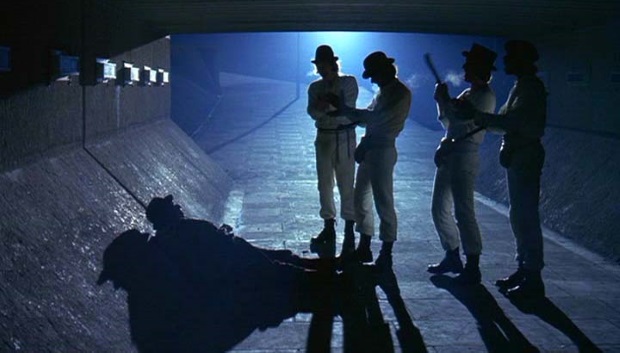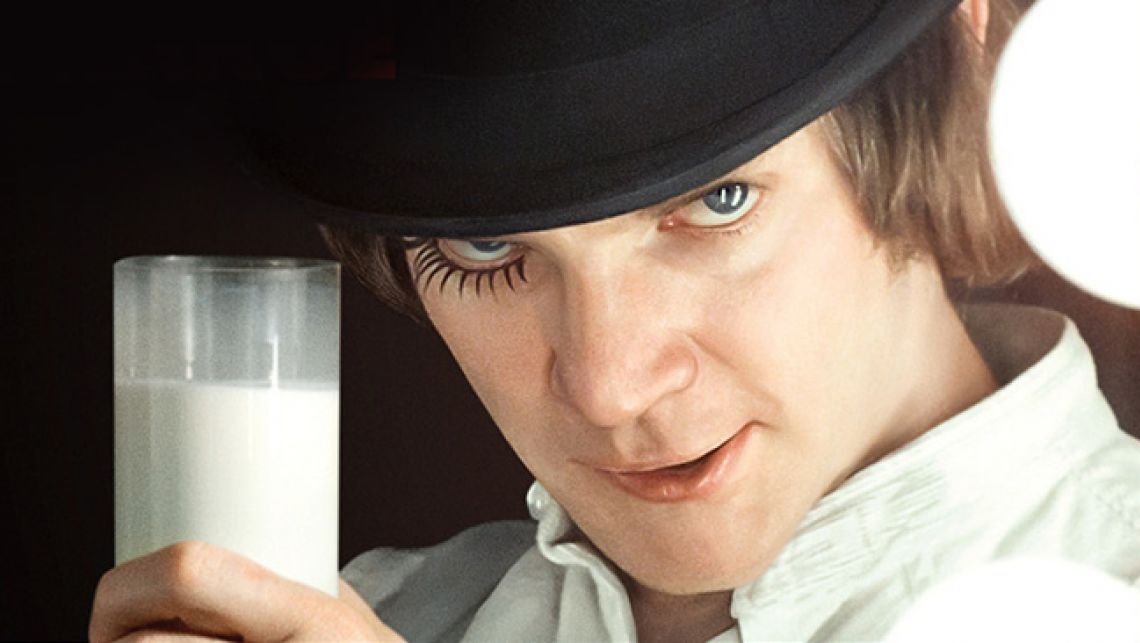Throughout much of the 1980s and early 1990s, there were two films that many film nerds wanted to get their hands on, but in the UK at least, they couldn’t. For The Exorcist and A Clockwork Orange were arguably the two highest profile films that, for much of VHS’ popularity, you simply weren’t able to rent or buy on tape in the UK. As such, an under the counter industry in illegal, poor quality copies was booming, whilst many cinemas traded off late night shows of The Exorcist, where the film could still be seen freely.
Yet not on VHS. Warner Bros opted, in the midst and aftermath of the video nasty scandal in the UK in the early 1980s, not to submit The Exorcist for a VHS release. It was probably wise not to do so, given that the chances of actually getting a certificate for a home release were very slim. By not submitting it at all, The Exorcist would thus never be banned. As it happened, it wasn’t until 1999 that the film finally was submitted for such a certificate, and was passed uncut with an 18 rating.
Buy A Clockwork Orange in new packaging here, or on digital download here. Using these links support the site, and it’s hugely appreciated.
But behind A Clockwork Orange’s unavailability lay a different story. Whilst The Exorcist was at least staring down the barrel of an official ban, A Clockwork Orange was never banned in the UK at all either. Moreover, it hadn’t been explicitly threatened with one for a VHS release. Instead, the reason that A Clockwork Orange was pulled from UK cinemas in 1973 and not officially seen in the UK again for over 25 years was down to its director, the late Stanley Kubrick.
Upon on the film’s release in 1971, it didn’t take long for the film of A Clockwork Orange to stir controversy. Based on the novel by Anthony Burgess, the movie – of course – stars Malcolm McDowell as Alex DeLarge, in arguably his career-best performance. But the film earned particular notoriety in March of 1972, when it was cited by a prosecutor in a court case. A 14-year old had been accused of manslaughter, and the prosecution argued that the film of A Clockwork Orange had relevance to the case. The film was linked with further cases too, with many ‘copycat’ crimes reported. The story gathered requisite fuel, and unhappiness with the film grew. It got to a point where protests were mounted, at times outside Kubrick’s family home.

The director himself was taken aback. Kubrick argued that pinning violence on the film was incorrect, stating a side of a debate that’s reared several times in the history of cinema. That is, that film cannot make someone do something they weren’t capable of doing already. That the crimes would have happened anyway. A Clockwork Orange was being used as a media scapegoat. Not that such an argument often holds shrift in the court of public opinion, of course.
Kubrick, though, decided to act. When the film had completed its theatrical run in the UK in early 1973, he asked Warner Bros to withdraw the film from circulation altogether. The studio agreed, although for over a half a decade, nobody noticed (this was in a pre-video age, of course). It was only, in 1979, when the National Film Theatre was refused permission to screen it as part of a retrospective of Kubrick’s work that the withdrawal came to attention for the first time.
But that’s all it was. Kubrick, without explanation, asked for the film to be taken out of circulation, and because people couldn’t get hold of it in Britain, the myth began to spread that it had been banned. But it hadn’t at all. Warner Bros continued to work with Kubrick for the rest of his life, and continued to accept his wishes where A Clockwork Orange was concerned.
It took until March 2000 for the film to return – legally – to British screens. Shortly after the death of Kubrick – who passed away days after locking his final cut of his last film, Eyes Wide Shut – Warner Bros finally applied for a certificate for the film, and it was granted. An 18, as you might expect.
On March 17th 2000, it thus made its way back to UK cinema screens, and a home release followed shortly after. Removed from the context of its original release, the response was surprisingly tame, with any arguments about it inciting or informing violence long rested. Instead, a classic film from a one-off filmmaker could finally be seen, without fuzzy lines and interference all over the screen…

